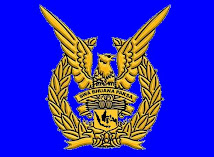Multi-Mission Capability for Emerging Global Threats
Avionics
- Northrop Grumman Electronic Systems AN/APG-81 AESA radar
- Lockheed Martin AAQ-40 E/O Targeting System (EOTS)
- Northrop Grumman Electronic Systems AN/AAQ-37 Distributed Aperture System (DAS) missile warning system
- BAE Systems AN/ASQ-239 (Barracuda) electronic warfare system
- Harris Corporation Multifunction Advanced Data Link (MADL) communication system
- Bombs:
- Mark 84, Mark 83 and Mark 82 GP bombs
- Mk.20 Rockeye II cluster bomb
- Wind Corrected Munitions Dispenser capable
- Paveway series laser-guided bombs
- Small Diameter Bomb (SDB)
- JDAM series
- B61 nuclear bomb
- AGM-154 JSOW
Air-to-air
Integrated sensors, information and weapons systems combined with speed and maneuverability— are critical to the F-35’s air superiority. In air combat, 4th generation aircraft have a higher radar cross-section, which means they can more easily be seen by enemy fighters. In combat, 4th gen aircraft and hostile nations have an equal opportunity to strike against one another. A 5th generation fighter has a lower radar cross-section to allow the F-35 pilot to see the other aircraft first and take action.
Intelligence, Surveillance and Reconnaissance (ISR)
Again drawing on the advantage of stealth and integrated sensors, the F-35 can fly critical intelligence, surveillance and reconnaissance (ISR) missions with more sophisticated data capture than any previous fighter aircraft. It the most powerful and comprehensive integrated sensor package of any fighter aircraft in history. Its next-generation avionics and sensor fusion give the pilot real-time access to battlefield information with 360-degree coverage.
Command and Control
The F-35's communication, sensors and information systems enable it to draw on information from around the world - and deliver that information directly to the battlefield. Embedded, network-enabled information capture allows distribution of information to enhance and enable other platforms. Information gathered by F-35 sensors can be securely shared with commanders at sea, in the air or on the ground, providing a high-fidelity view of ongoing operations.
Electronic Attack
Advanced electronic warfare (EW) capabilities enable the F-35 to locate and track enemy forces, jam radio frequencies and disrupt attacks with unparalleled precision. All three variants of the F-35 carry active, electronically scanned array (AESA) radars with sophisticated electronic attack capabilities, including false targets, network attack, advanced jamming and algorithm-packed data streams. This system allows the F-35 to reach well-defended targets and suppress enemy radars that threaten the F-35.
- Penetapan industri pertahanan.
- Pengaturan kebijakan produksi bagi keperluan komersial dan pertahanan.
- Penunjukan Departemen Pertahanan sebagai supervisi bagi industri pertahanan.
- Perumusan program pembangunan industri pertahanan berdasarkan skala prioritas.
Sources:
Lockheed Martin
https://www.f35.com/
http://en.wikipedia.org/wiki/Lockheed_Martin_F-35_Lightning_II















































